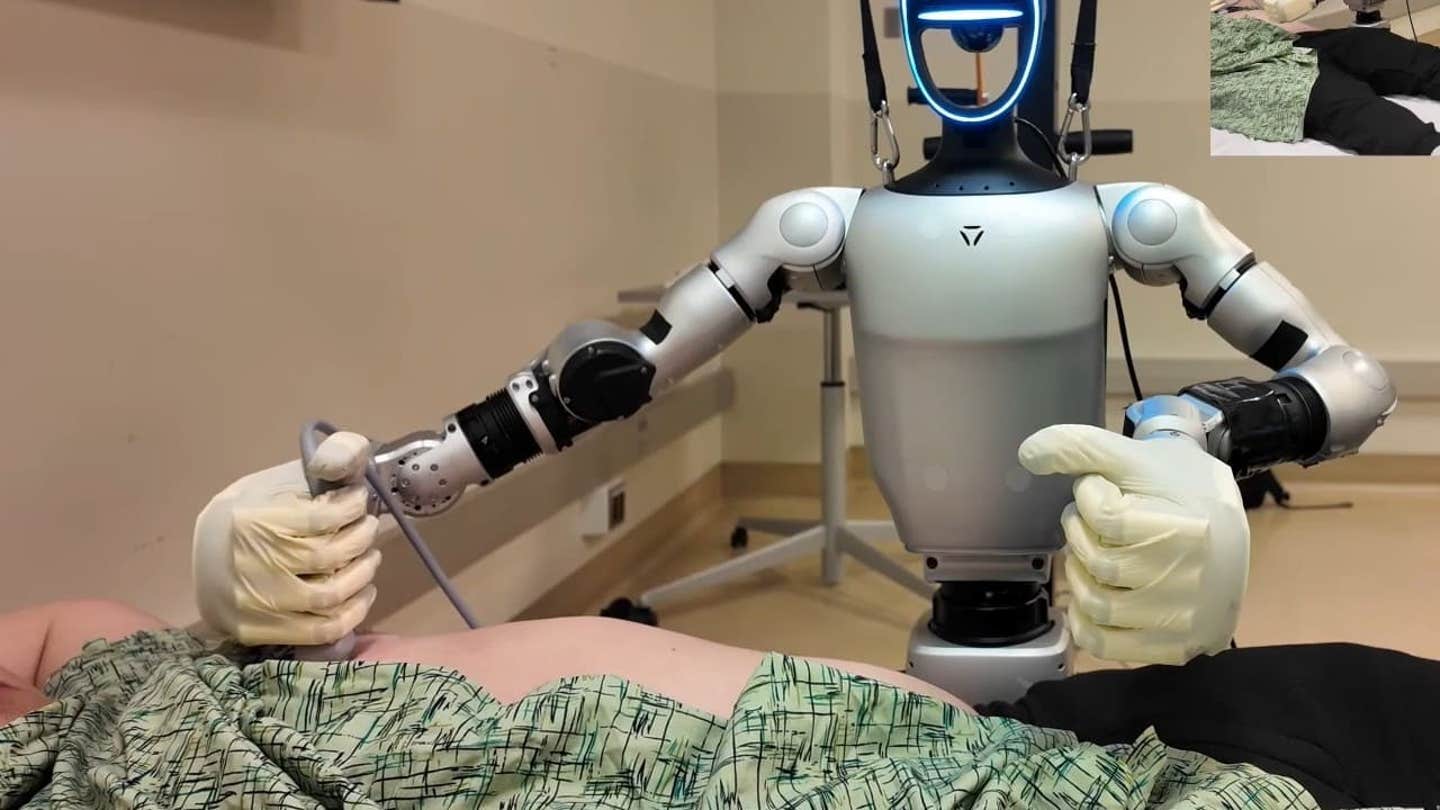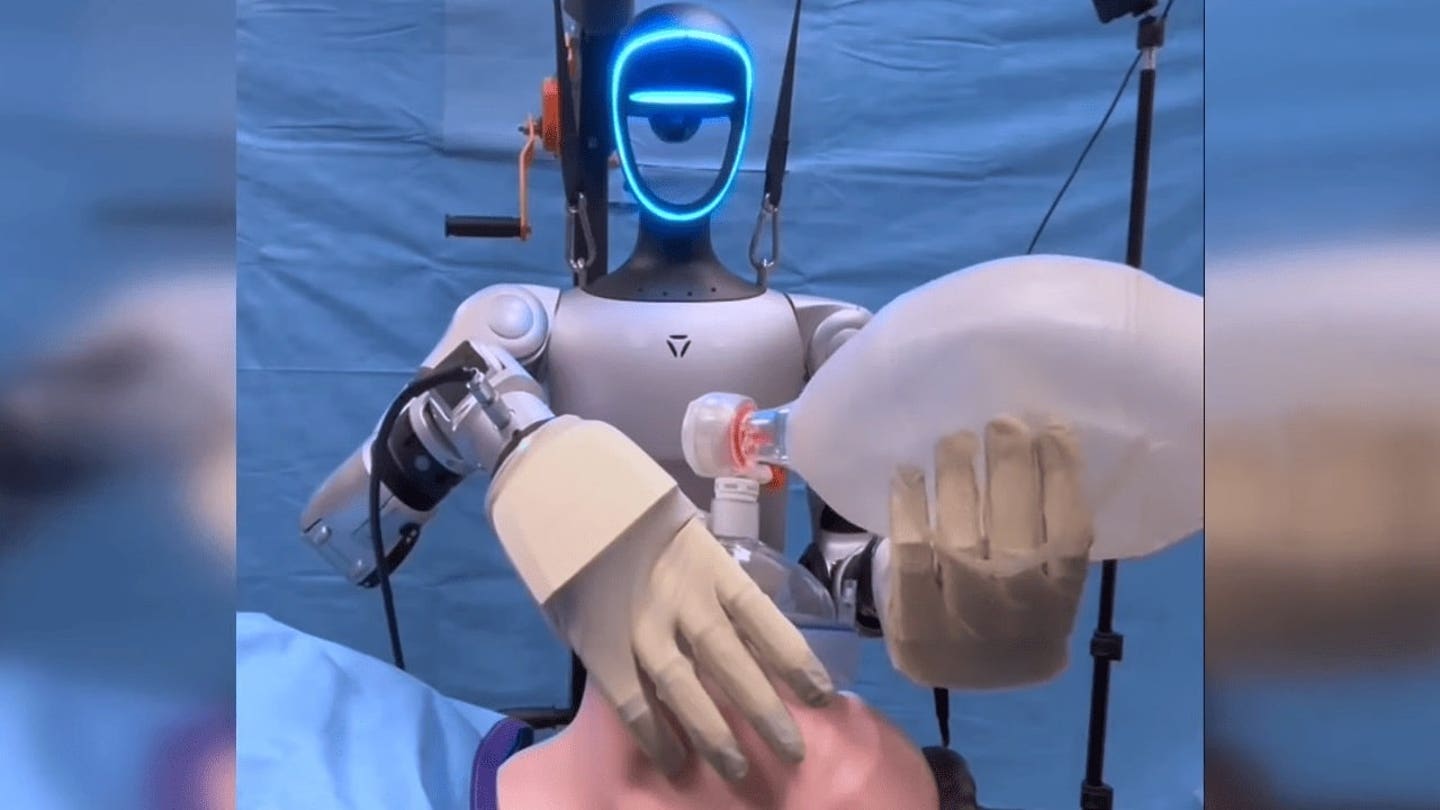NEWNow you can listen to articles from reputable sources!
Healthcare systems globally are facing challenges such as overcrowded hospitals, physician burnout, and increasing surgery delays. Thankfully, research is being conducted to explore innovative solutions using technology. The University of California San Diego (UCSD) is investigating the potential of humanoid robots in addressing these issues. These robots could potentially alleviate medical burdens by offering more flexibility compared to traditional surgical robots that are costly and specialized.
The Unitree G1 humanoid robot conducting a physical exam. (UCSD ARCLAB)
UCSD tests Unitree G1 humanoid robot in real medical procedures
UCSD has equipped a Unitree G1 humanoid robot with Inspire Gen4 robotic hands and developed a bimanual teleoperation system for it. This system allows the robot to perform seven different medical procedures using a remote control operated by a human using foot pedals, HTC Vive trackers, and motion-capture cameras.
These procedures include physical exams like auscultation and palpation, as well as emergency procedures such as Bag Valve Mask ventilation and endotracheal intubation. The robot managed to carry out most tasks accurately, despite facing challenges with force control and sensor sensitivity.

The Unitree G1 humanoid robot performing an ultrasound. (UCSD ARCLAB)
Medical robot trial results show strong potential for hospital use
The robot successfully performed basic physical examinations using a stethoscope. However, limitations in sensor feedback and hand design hindered its performance. In emergency care, the robot consistently achieved ventilation but required human assistance for intubation.
During needle procedures, the robot conducted ultrasound-guided injections with a 70% success rate when operated by non-clinicians. The trials revealed issues with needle control and orientation during suturing, indicating the need for improvement in haptic feedback mechanisms.

The Unitree G1 humanoid robot performing ventilation. (UCSD ARCLAB)
How humanoid robots could transform healthcare and hospital staffing
This study marks a significant step in integrating humanoid robots into hospital operations. With aging populations and workforce shortages, adaptable robots like these could assist with routine and emergency tasks in healthcare settings. They have the potential to relieve pressure on medical staff and offer remote-controlled versatility for rapid responses and diverse tasks.
Implications for individuals
If you’ve experienced long waits in emergency rooms, struggled to secure specialist appointments, or worried about overburdened healthcare providers, this research is noteworthy. While humanoid robots won’t replace doctors, they could provide practical support in various scenarios, from emergency procedures in remote locations to routine exams in busy hospitals. This technology could reduce wait times, improve treatment speed, and create safer environments in hospitals where staff are less strained.
For individuals in rural or underserved areas, humanoid robots could offer crucial care support where medical personnel are scarce. And for healthcare workers, these robots could alleviate repetitive or physically demanding tasks.
Though the technology is evolving, early results suggest a future where hospitals utilize robotic assistance to deliver efficient and improved care.
Kurt’s key insights
While humanoid robots like the Unitree G1 aren’t ready to replace humans entirely, they are showcasing their capabilities in medical settings. Addressing issues like force control, sensitivity, and dexterity will pave the way for these robots to assist in operating rooms worldwide, bolstering healthcare systems and accessibility.
Would you trust a humanoid robot to manage your healthcare needs? Share your thoughts with us at Cyberguy.com/Contact.
Kurt “CyberGuy” Knutsson is an esteemed tech journalist with a passion for technology and gadgets that enhance life. He contributes to various platforms, including Fox News & FOX Business, sharing his expertise in the mornings on “FOX & Friends.” Have a tech query? Subscribe to Kurt’s CyberGuy Newsletter, share your stories, ideas, or comments at CyberGuy.com.





